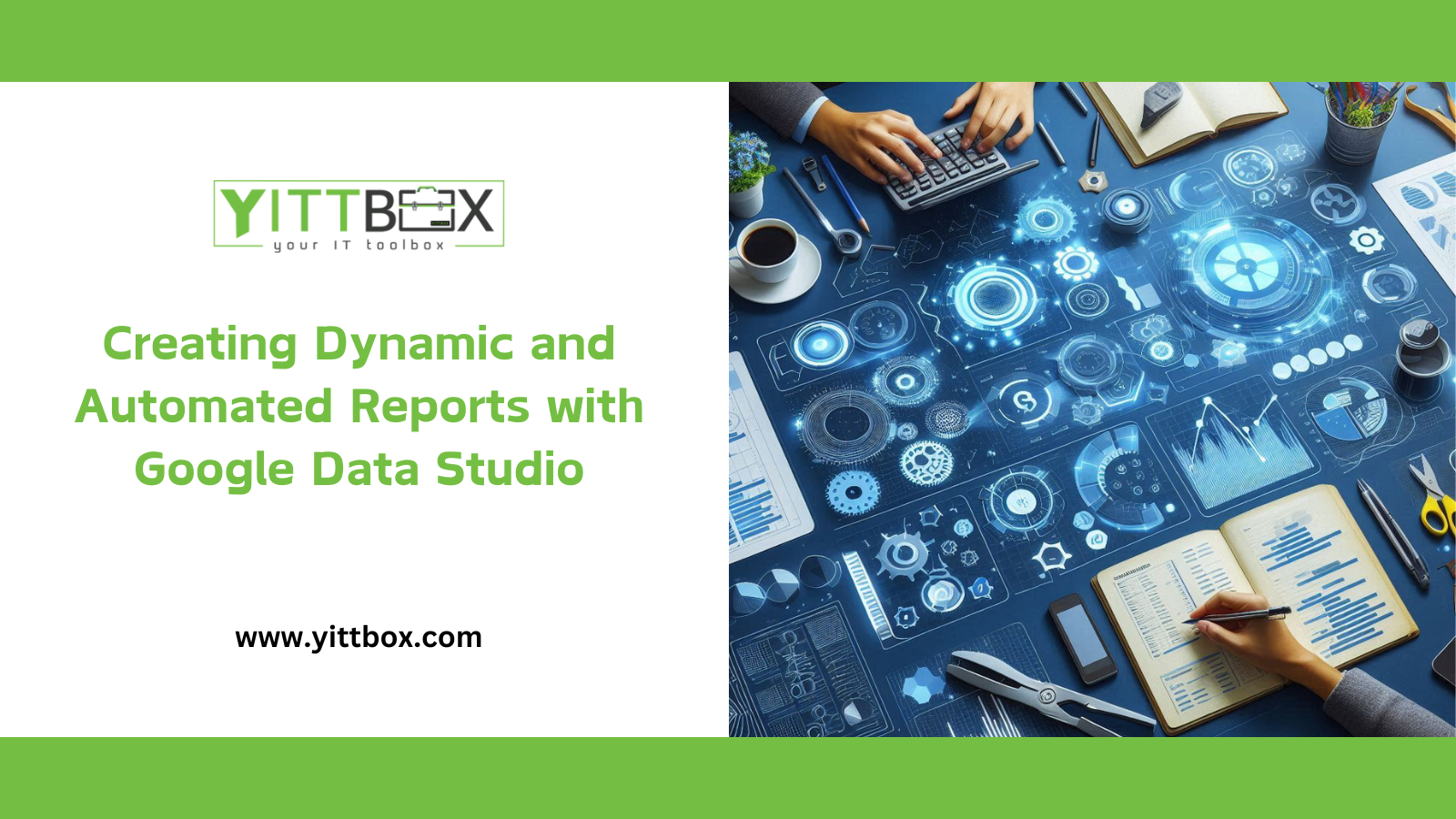Creating Dynamic and Automated Reports with Google Data Studio
In the modern business environment, data drives decision-making. The ability to create dynamic and automated reports not only saves time but also provides up-to-date insights that can influence strategic decisions. Google Data Studio is a powerful tool that enables businesses to transform raw data into compelling, interactive reports. This blog will guide you through creating dynamic and automated reports with Google Data Studio, helping you leverage your data more effectively.
Why Use Google Data Studio for Dynamic and Automated Reports?
Google Data Studio offers several advantages for creating dynamic and automated reports:
- Real-Time Data Updates: Reports automatically refresh with the latest data.
- Interactive Dashboards: Users can interact with data through filters and controls.
- Customization: Tailor reports to meet specific needs and highlight key metrics.
- Collaboration: Share insights easily with team members and stakeholders.
Steps to Create Dynamic and Automated Reports in Google Data Studio
1. Setting Up Google Data Studio
Start by setting up your Google Data Studio account:
- Sign In: Use your Google account to sign in to Google Data Studio.
- Create a New Report: Click on the ‘Create’ button and select ‘Report’.
2. Adding Data Sources
Connect your data sources to Google Data Studio:
- Add Data Source: Click on the ‘Add Data’ button in your new report.
- Choose Connector: Select from a wide range of connectors, including Google Analytics, Google Sheets, BigQuery, and more.
- Authorize Access: Grant Google Data Studio permission to access your chosen data sources.
- Configure Data Source: Select the specific data you want to use in your report.
3. Designing Your Report
With your data source connected, start designing your report:
- Add Charts and Tables: Use the ‘Add a Chart’ feature to include various visualizations such as time series, pie charts, and bar graphs.
- Customize Metrics and Dimensions: Focus on key performance indicators (KPIs) relevant to your goals.
- Apply Filters: Use filters to narrow down data by date range, user segments, or specific events.
- Create Interactive Elements: Add controls like date range selectors, dropdown menus, and search boxes to make your report interactive.
4. Automating Your Reports
Automate your reports to ensure they always display the latest data:
- Set Data Refresh Intervals: Configure your data sources to refresh at regular intervals (e.g., daily, hourly).
- Schedule Email Reports: Set up automated email delivery for your reports, ensuring regular updates to key stakeholders.
- Use Templates for Consistency: Start with pre-built templates and customize them to fit your needs. This ensures consistency across different reports and saves time.
5. Sharing and Collaboration
Maximize the impact of your reports by sharing them:
- Click ‘Share’: Use the ‘Share’ button at the top right to invite team members or create a shareable link.
- Set Permissions: Decide whether recipients can view or edit the report, ensuring the right level of access.
- Embed Reports: Integrate your Data Studio reports into websites, Google Sites, or other platforms for broader visibility.
Advanced Tips for Dynamic and Automated Reports
1. Data Blending
Combine multiple data sources to create comprehensive reports:
- Multi-Source Blending: Integrate data from different platforms like Google Ads, YouTube, and social media.
- Enhanced Insights: Provide a holistic view of your marketing efforts and overall performance.
2. Using Advanced Calculated Fields
Create custom metrics and dimensions:
- Calculated Fields: Use formulas to create new metrics and dimensions based on existing data.
- Custom KPIs: Tailor your reports to include unique KPIs that matter most to your business.
3. Leveraging Community Connectors
Expand your data integration capabilities:
- Community Connectors: Access a wide range of third-party connectors built by the Data Studio community.
- Custom Integrations: Use these connectors to bring in data from platforms not natively supported by Google Data Studio.
Conclusion:
Google Data Studio is a robust tool for creating dynamic and automated reports that keep your team informed and your business on track. By leveraging its powerful features, you can turn raw data into actionable insights, streamline your reporting process, and foster data-driven decision-making across your organization.
Start creating your dynamic and automated reports with Google Data Studio today and unlock the full potential of your data!







